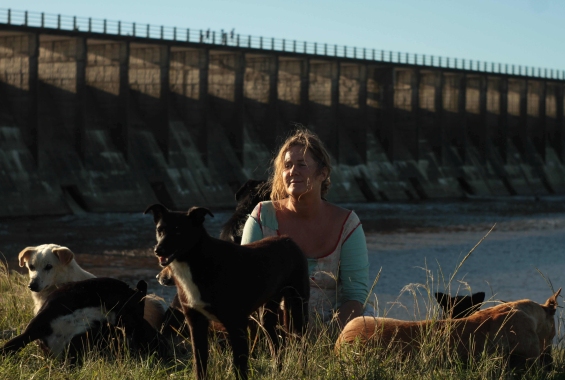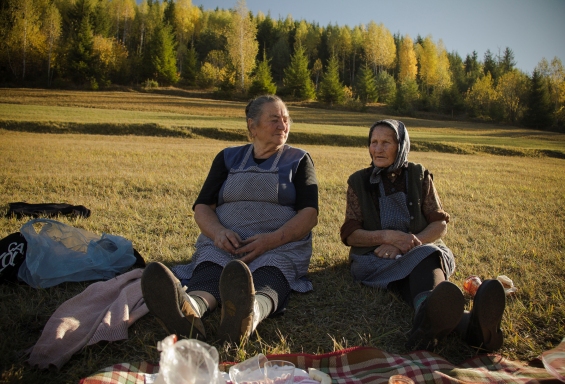
Verónica Llinás in DOG LADY (LA MUJER DE LOS PERROS) (2015, Dir. Laura Citarela, Verónica Llinás), screening in the 11th annual Rural Route Film Festival. Image courtesy of Rural Route Films.
July 24, 2015 It’s In Queens
Rural women are “key agents for achieving the transformational economic, environmental and social changes,” according to a new report by the United Nations.
In fact, they do it all: sewing, hair-cutting, health care, administrating the family income, cooking, cleaning, farming, fetching water, etc. The day never ends.
On July 24, the Museum of the Museum Image launches a special tribute to bold, independent women in isolated areas with the 11th annual Rural Route Film Festival. This three-day series will show 19 movies from 16 countries (and seven continents). Some directors will be on hand to discuss their works, while other screenings will feature performances by The Main Squeeze Orchestra, an all-female accordion troupe, and Flor de Toloache, an all-female mariachi band.
Opening night presents a preview screening of Sailing a Sinking Sea, a documentary on the Moken people, one of Asia’s smallest ethnic groups. This fishing, seafaring community spends eight months of the year in thatch-roofed wooden boats off the coast of Thailand.
Other movies include the New York premiere of Stream of Love , a documentary on a remote, Hungarian-speaking village in Transylvania where time has stood still. Most inhabitants are elderly and practice an ancient game of courtship. Dog Lady depicts a woman who lives with a pack of stray dogs in a shack she built in the outskirts of Buenos Aires. This nameless, unexplained female does not use money. She forages for food, gathers water, and even has a sexual encounter.
Rain the Color Blue with a Little Red in It is the first-ever Tuareg-language feature film. It tells the story of a musician in Niger who is trying to make it against all odds, set against the backdrop of the raucous Tuareg guitar subculture.
Times vary. Click here for the festival’s schedule.

Film still from Ágnes Sós’s STREAM OF LOVE (Szerelempatak) (2013), showing at Museum of the Moving Image as part of the 11th annual Rural Route Film Festival. Image courtesy of Rural Route Films.
One Comment






Gald to hear this happened a couple of days ago.